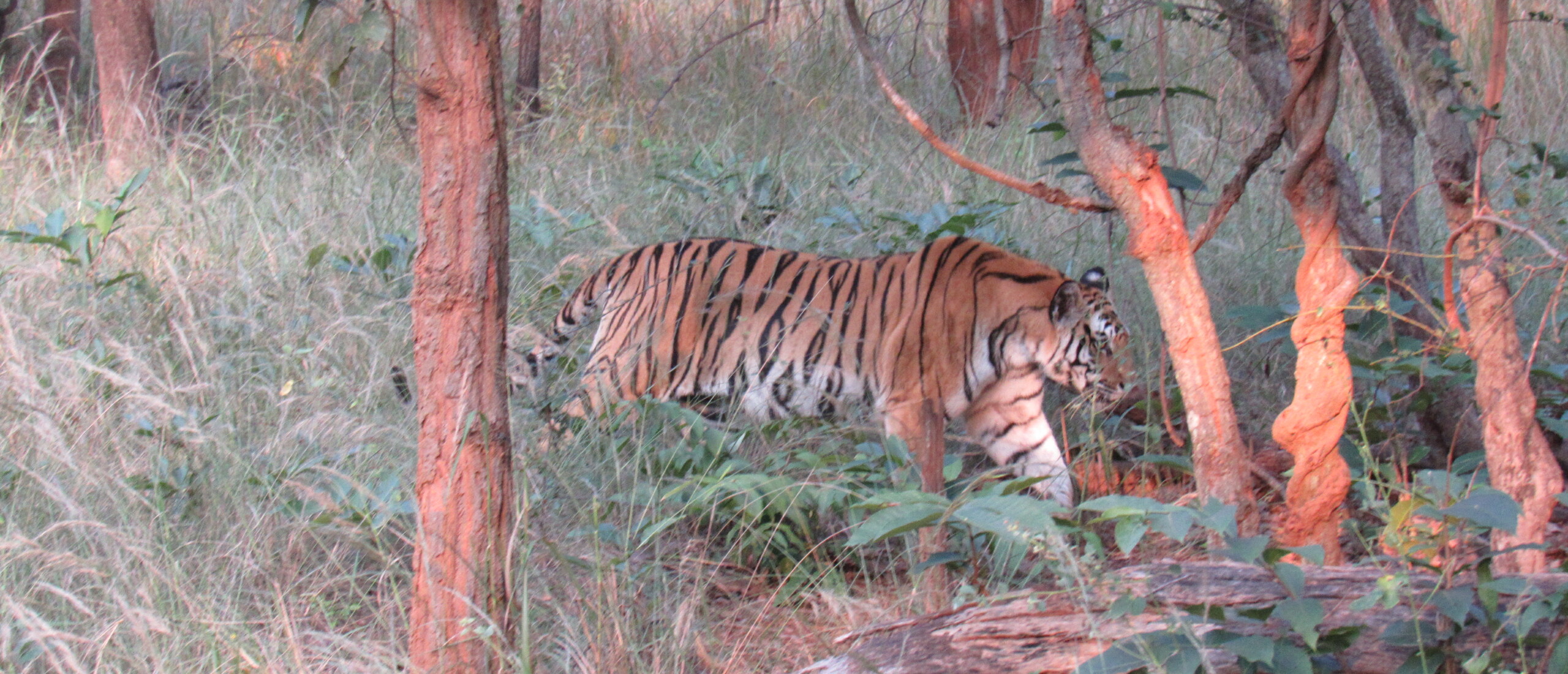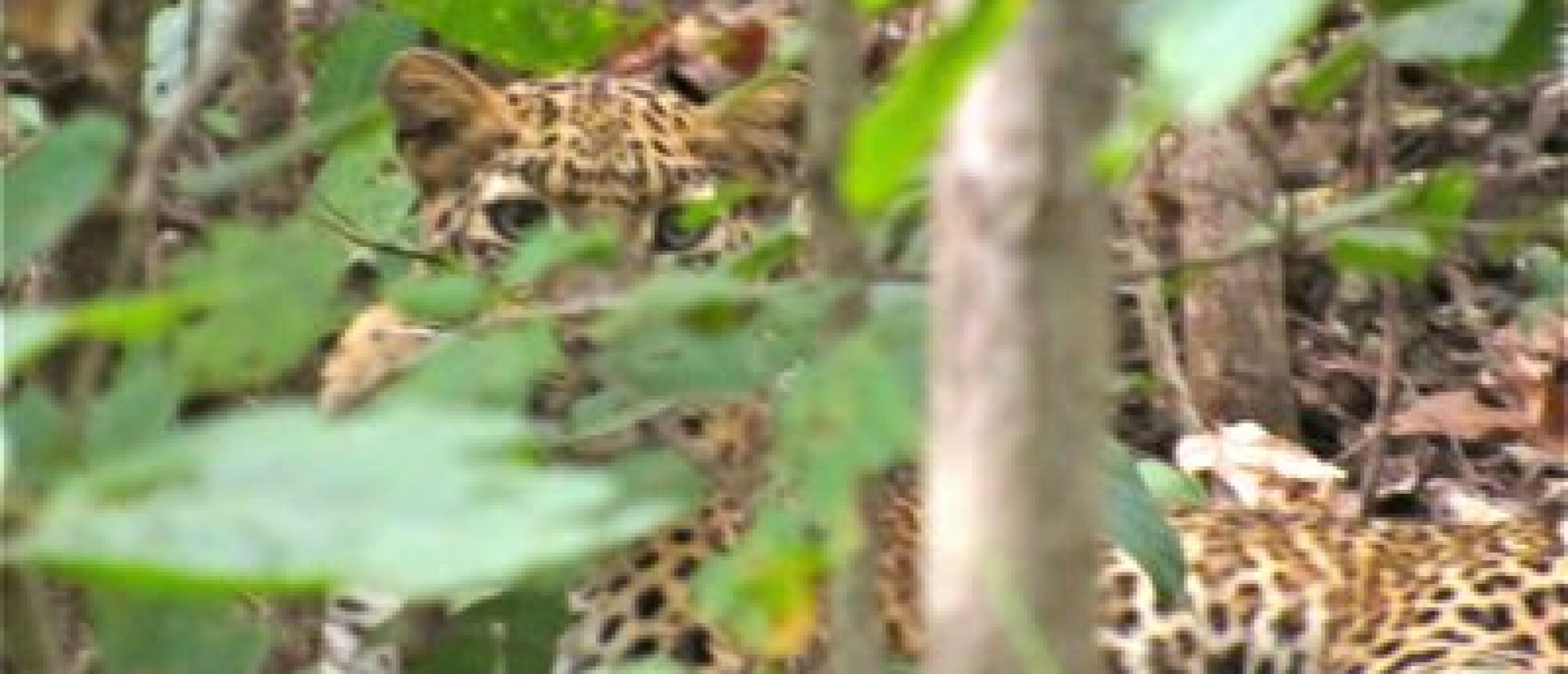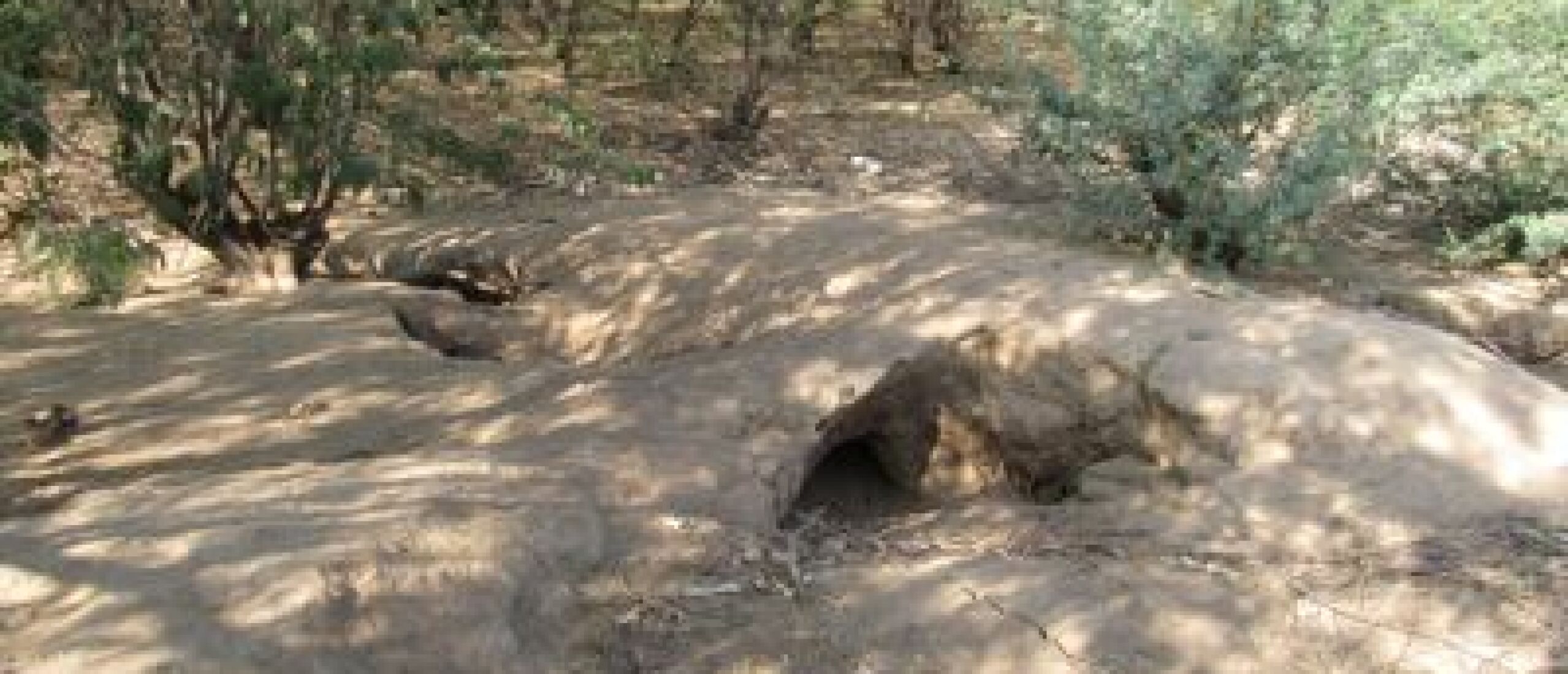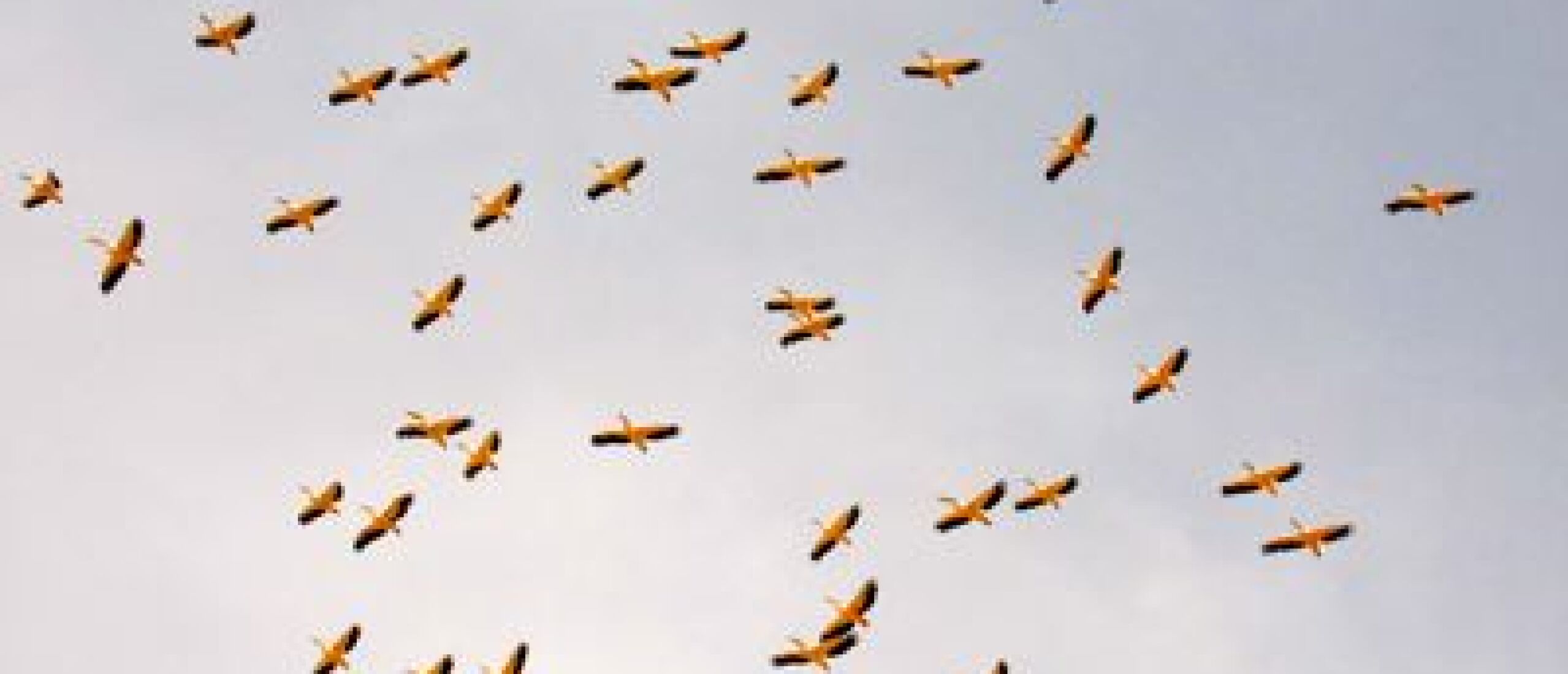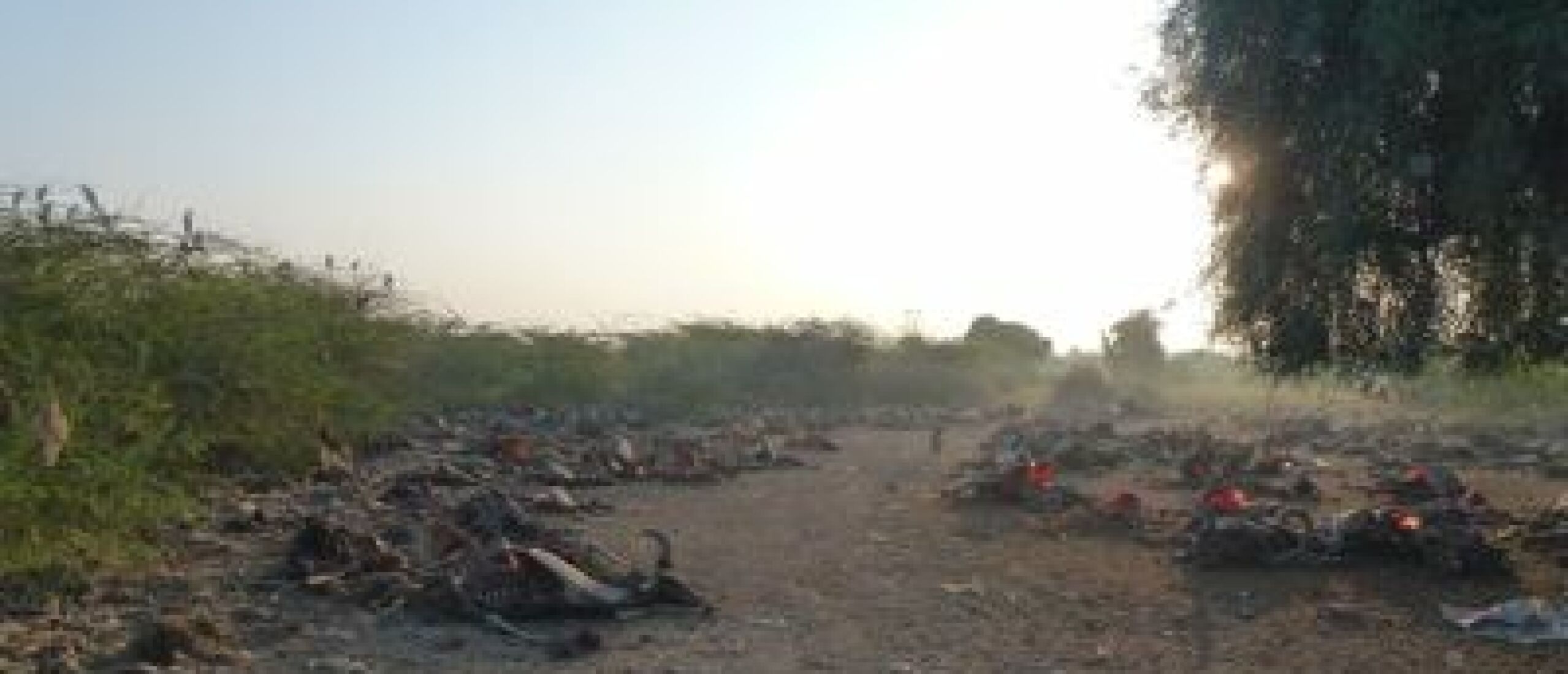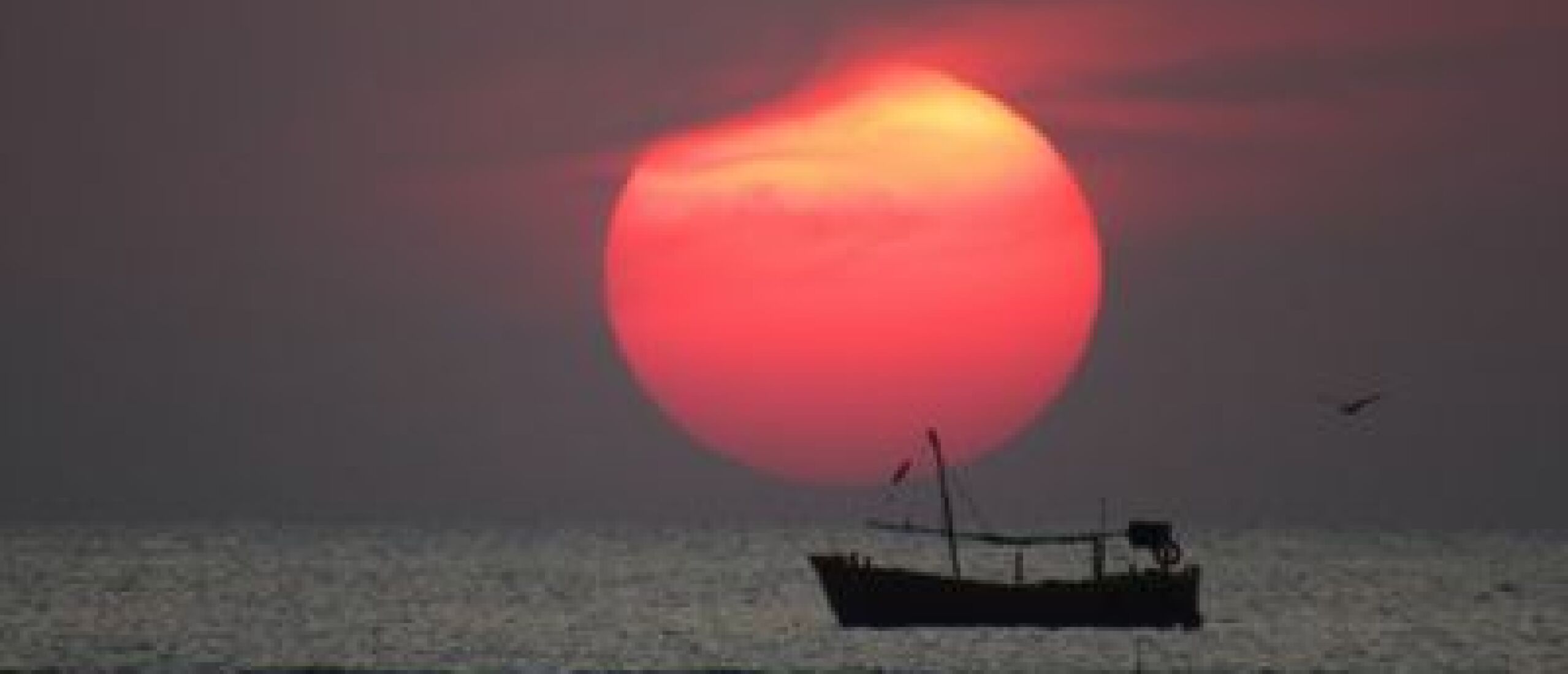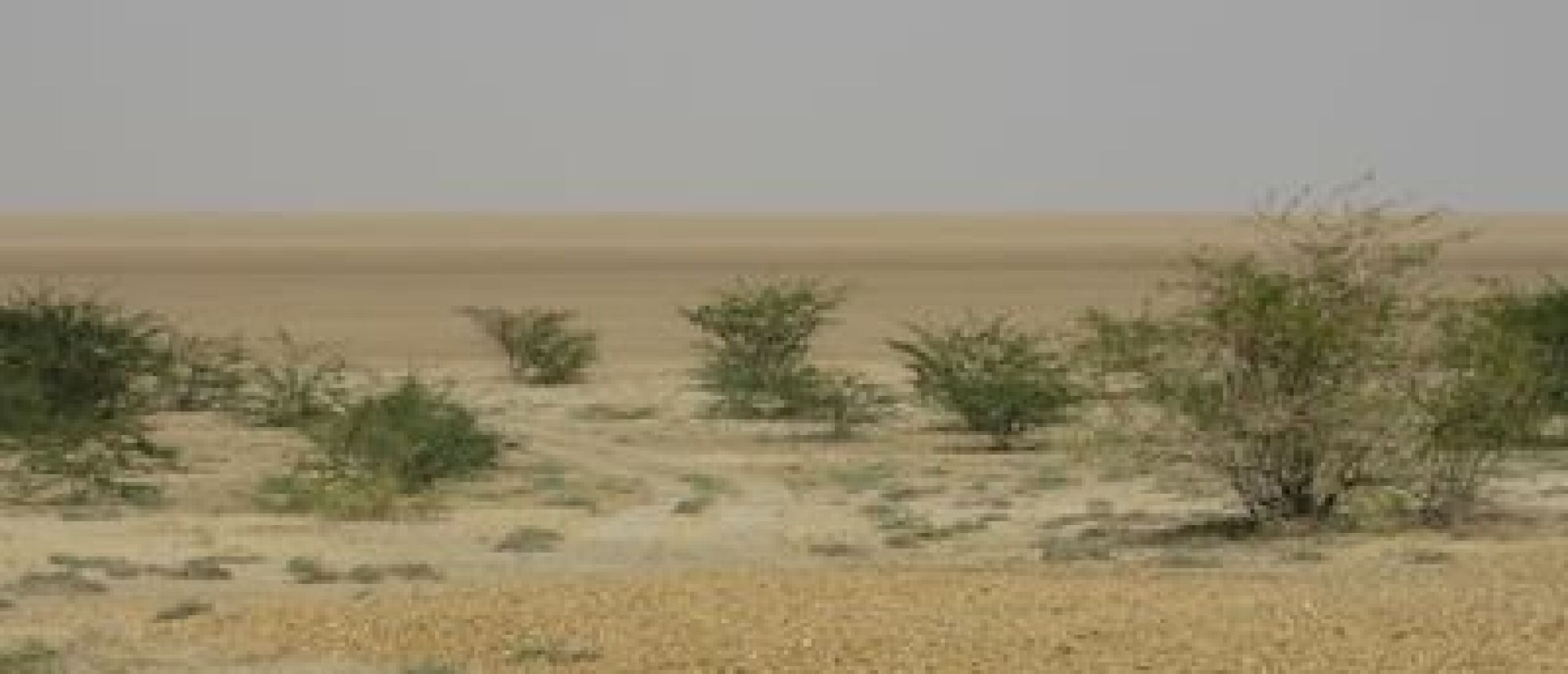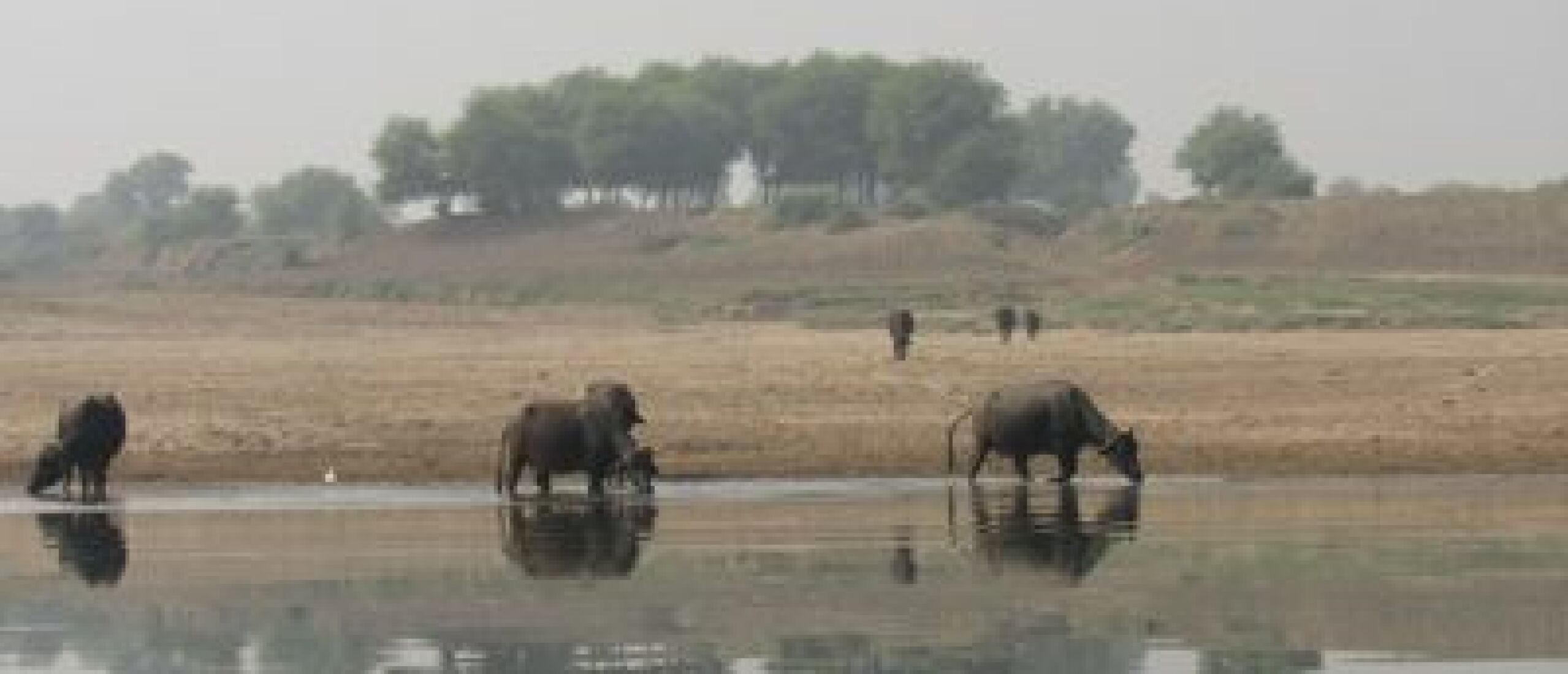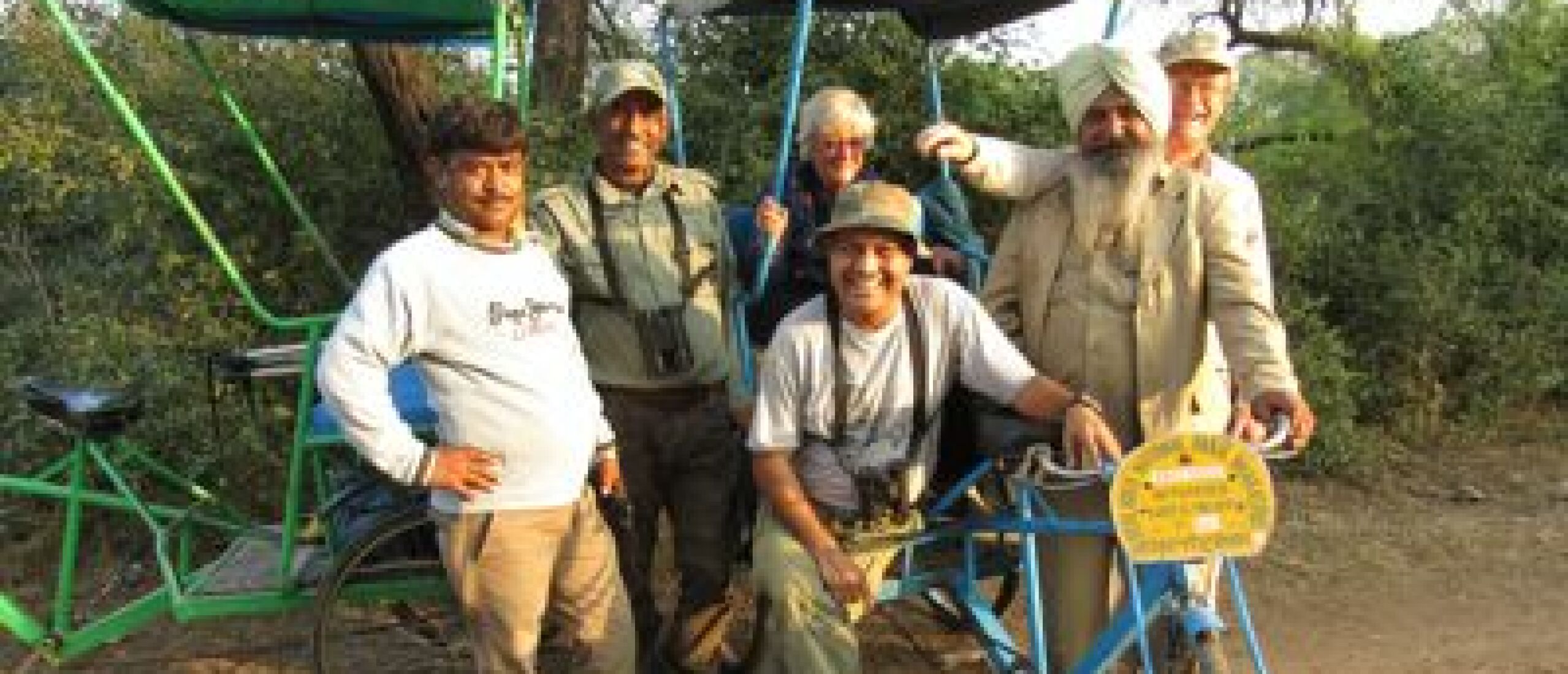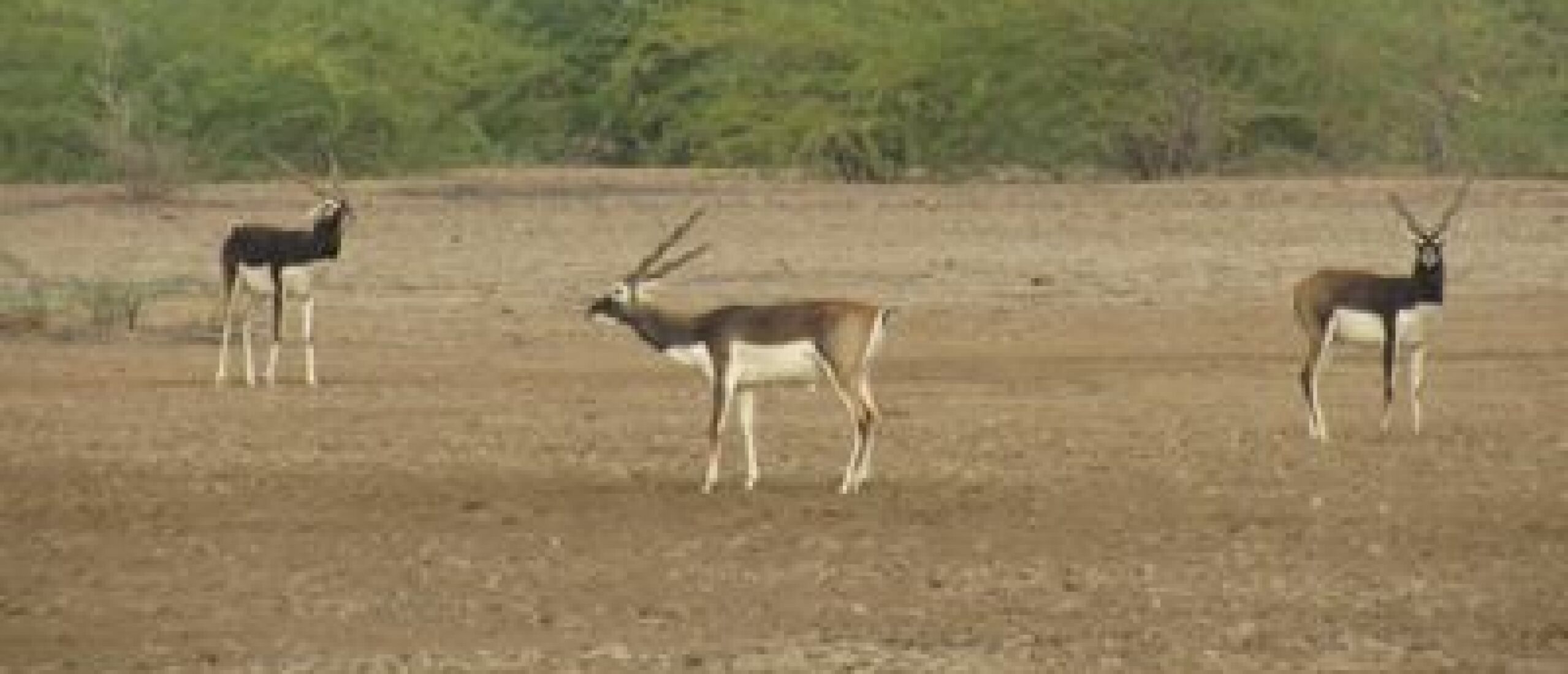
Gujarat - a dry state, in more ways than one! A few days ago, our central Indian sojourn reached an end, and we flew with IndiGo from Nagpur to Ahmedabad via Pune, arriving late in the afternoon. We were picked up by our driver Bhawani Singh, who launched us skillfully into the traffic of the capital of the western Indian state of Gujarat. Initial impressions of Ahmedabad were not very favourable, the roads being lined with grotty makeshift stalls, and considerable numbers of families were living rough, with poor street children running around, some begging from car drivers at red traffic lights. Rubbish was piled everywhere, and it seemed ironic to me that Prime Minister Modi's Clean Up India campaign should apparently have had so little impact in his own home state. It seemed an age before we finally escaped the outskirts of the city, passing polluted ponds, piles of plastic trash lining every water body, with cows and buffaloes nosing through the discarded bags in the hope of finding some tasty morsel. All this led me to mentally rename the state as Gunjarat, so much human gunge does it seem to contain! Our 200 km route took us to the bustling town of Bhavnagar, where we checked into the Basil Park Hotel, our home for the next two nights. Our customary "garam pani" (literally meaning "hot water", but in our case this meant a cold Kingfisher beer) was sadly absent in this dry state, where alcohol is officially banned. The next morning was supposed to be a rest period, but little did I know that Bhawani and Yogi were using the time productively by scouting out some nearby wetlands, which Rosemary and I were then taken to in the afternoon. These extensive pools and saltpans, despite the appalling detritus they contained, turned out to be a birders' Mecca, and my overall list for this year's trip surged forward from a paltry 180 species to 239. Perhaps due to the Gujaratis' predominantly vegetarian tradition, plus the ban on hunting that Indira Gandhi had so farsightedly introduced in 1972, large numbers of waterbirds were to be found, literally right on the city's doorstep.
 Part of the extensive wetlands close to Bhavnagar
Part of the extensive wetlands close to Bhavnagar
Perhaps the most spectacular among the many avian delights were the Flamingoes, both Greater and Lesser, which were here in very large numbers. They do not breed in these marshes, and in fact they are apparently under some threat, as there is a plan to drive a military road through their only known Indian breeding ground, in the Great Rann of Kutch, close to the sensitive Pakistan border, which may cause the birds to abandon that site, and therefore India, altogether as breeding birds.
 Just a few of the hundreds of Flamingos in the Bhavnagar wetlands
Just a few of the hundreds of Flamingos in the Bhavnagar wetlands
Other highlights included six endangered Dalmatian Pelicans, which like so many of the larger migratory birds will have had to run the gauntlet of flying over Afghanistan and Pakistan, countries in which guns are owned by large numbers of people, some of whom are eager to practise their aim by blasting at a soaring flock of pelicans, storks or cranes on their long migration routes from Siberia, Kazakhstan or Central Asia.
 Dalmatian Pelicans are a rare sight
Dalmatian Pelicans are a rare sight
It was noticeable that birdlife was restricted to the unaltered areas of natural-looking marshy vegetation and pools, the saltpans being clearly too saline to be of any use to the birds. Large areas have already been converted into salt workings, into which salty water is pumped, the water then evaporating off in the mid-day heat, leaving the pure white salt behind. Other sections are being lost to industrial development, one particular factory announcing itself as a toxic waste disposal plant. One wonders where the toxic waste ends up: in the marshes, most probably.
 The salty areas did not attract much birdlife
The salty areas did not attract much birdlife
After a final morning spent re-checking these areas and an additional nine species of bird being found, we headed out of Bhavnagar, into a drier area of low acacia-dominated grasslands, eventually arriving at our extremely plush accommodation, at Blackbuck Lodge, where we were pampered in style (even to the extent of being able to indulge in some "garam pani", in this case gin and tonic).
 Sunrise over the Bhavnagar wetlands
Sunrise over the Bhavnagar wetlands
One of the great sights we witnessed here was the constant stream of Harriers of three species, predominantly Montagu's and smaller numbers of Marsh and the ghostly Pallid, sailing past the luxury open tent in which we were enjoying our tea, all heading for the large patches of dry grassland within the adjacent Blackbuck National Park, in which they roost on the ground. Apparently more than 3,000 of these graceful raptors gather here each evening, in what is apparently the largest communal Harrier roost in the World.
 A Montagu's Harrier in the Blackbuck National Park
A Montagu's Harrier in the Blackbuck National Park
But it is the Blackbuck, that extraordinarily elegant antelope, that the park was set up to protect. These hugely attractive animals were decimated in the great massacre of Indian wildlife that took place in the 1950s and 60s, when previously closed areas were opened to hunters with high-powered firearms in motor vehicles, and anything went. Indeed, this slaughter had already started in cultivated areas even earlier, and as I admired these wonderful creatures, I felt proud that it was my grandfather, F W Champion OBE IFS, who was one of the first to campaign for their protection, albeit in another part of India. He wrote an article back in 1934, entitled "A Plea for the Indian Blackbuck", which began: In the olden days the handsome Indian blackbuck [Antilope cervicapra] was certainly the commonest game animal in India, and vast herds, sometimes running into thousands, were scattered all over the country, except in moist places such as parts of Bengal and Malabar. On railway journeys they could commonly be seen from the train windows, forming a very typical and striking feature of the Indian landscape, and their numbers were so great that they undoubtedly did a good deal of damage to crops and were consequently classed as “vermin” by Government. Blackbuck still occur in fair numbers in more distant places, but every year they seem to be getting fewer and fewer, and it is doubtful if there are now 10 percent of what there were fifty years ago. This destruction of one of the finest antelopes in the world is increasing annually, and one begins to wonder if the unfortunate blackbuck is doomed to follow the fate of the bison of America, and of other creatures, once existing in countless numbers, that have now disappeared from the world.
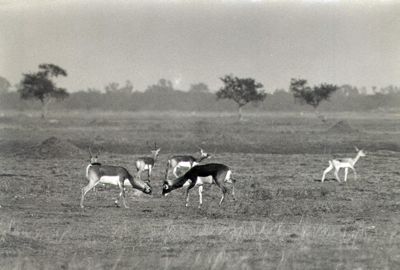 Blackbuck photographed by F W Champion in UP, probably in 1933
Blackbuck photographed by F W Champion in UP, probably in 1933
Luckily, thanks to far-sighted conservationists such as my grandfather, that doomsday prediction has not befallen the Indian Blackbuck, and at least here, the animal seems to be flourishing, and it was a pleasure to admire the spectacular males with their extraordinary spiral horns, and the pale beige females and young, some of which were indulging in the jumping behaviour that is so characteristic of several species of antelope, perhaps most famously the Springbok.
 Blackbuck must surely be one of the most elegant of the antelopes
Blackbuck must surely be one of the most elegant of the antelopes
The other wonderful mammal sighting we were treated to here was a Jungle Cat, which appeared in the long, dry grass beside one of the tracks on our last safari. I leave the description of this delightful animal to my grandfather, who published an article in the magazine "India" about it in October 1930: The common jungle-cat is quite a large animal, a little smaller than the average jackal and weighing up to as much as 20 pounds. It is therefore considerably larger than the ordinary domestic cat, with which it undoubtedly sometimes interbreeds. The colour of the body varies from sandy grey to greyish brown but most specimens usually have a brownish tint. In adults there are, in most cases, no markings on the body or limbs, but the tail, which is normally rather short, is nearly always ringed with black near the end and terminates with a black tip. Sometimes there are slight transverse markings in the limbs and occasionally a black variety occurs, an example having been brought in to me only last year. Few sportsmen can have failed to have seen this creature at one time or another, for it is by no means entirely nocturnal in its habits and is not particularly shy of human beings. It feeds on birds and small mammals and is said to be especially destructive to partridges, peafowl, hares and other game. Cases have been recorded of birds shot by sportsmen being snatched away by this cat before they could be picked up, and a reward of Rs. 5 is paid for its destruction in the reserved forests of the United Provinces. The track left by this animal is exceedingly small for the size of the leg, and, in the case of the photograph illustrating this article, which was taken by automatic flashlight, I expected the negative to show a much smaller cat than it actually does. The track is a typical cat’s track, exactly like the spoor left by a tiger or a leopard, but on a miniature scale. Incidentally I would point out that an early morning study of the tracks left on sandy roads in the jungle is one of the very best ways of learning what animals are living in the neighbourhood, for most animals, except the deer tribe, are very fond of walking along the roads and paths made by man, presumably because they form the easiest and most direct way of moving from place to place, but also because hunting animals can move along them extremely silently. Automatic flashlight cameras placed by me along such roads have been fired literally hundreds of times by the various animals, from wild elephants down to hares and small cats, the commonest victims being hyaenas, but the number of times that deer, which in numbers probably exceed all others put together except porcupines, have fallen into my photographic traps, could be counted on the fingers of one hand.
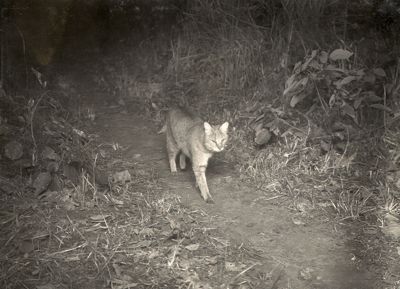 An Indian Jungle Cat photographed using a tripwire by F W Champion
An Indian Jungle Cat photographed using a tripwire by F W Champion
Our sighting was altogether different, with us being to look down on the animal from our elevated vantage point on the vehicle. The Jungle Cat was stalking in the long grass, and at times only its ears were visible. It then ran out across a patch of open ground, and then finally jumped up out of the grass an apparently caught something. Unfortunately I had looked away just at that moment, and therefore missed this sight.
 The Jungle Cat stalking through the grass
The Jungle Cat stalking through the grass
 The Jungle Cat moved out across an open area
The Jungle Cat moved out across an open area
 It then ran away towards the grass beyond
It then ran away towards the grass beyond
I end this post with my grandfather's appeal at the end of his 1934 article, which could apply not only to the Blackbuck, but also to so many other species that were decimated before sport hunting was banned by India's Wildlife Act of 1972: There is much more that could be written about these interesting and handsome animals. I will close by appealing once more to all concerned and to those Indians who are proud of their country in particular, to remember that no species of wild animal, no matter how common it may once have been or may even appear to be now, can stand the unfair and destructive methods of slaughter which modern science has placed in the hands of those who have no feeling for wild animals or for sport in the true sense of the word.
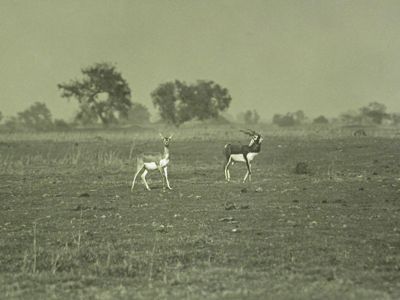 F W Champion seemed to be able to ask his animal subjects to pose artistically for his camera
F W Champion seemed to be able to ask his animal subjects to pose artistically for his camera
 Thankfully the Blackbuck seem safe here at Velavadar thanks to rigorous protection
Thankfully the Blackbuck seem safe here at Velavadar thanks to rigorous protection


